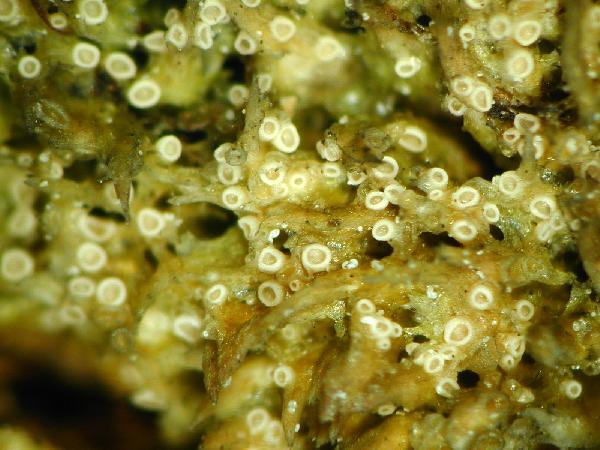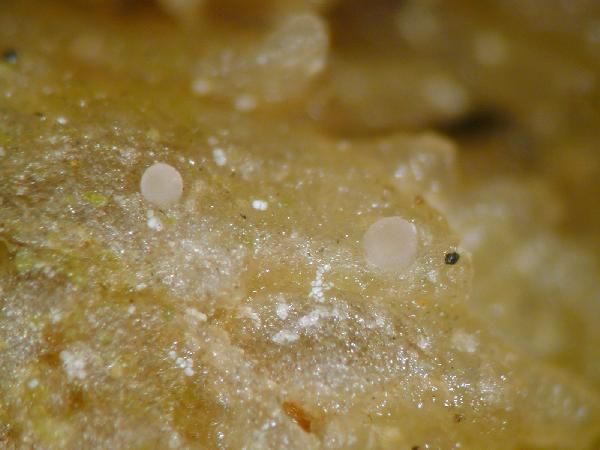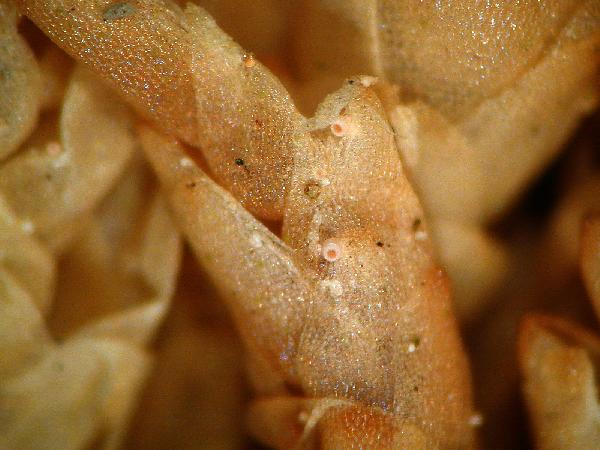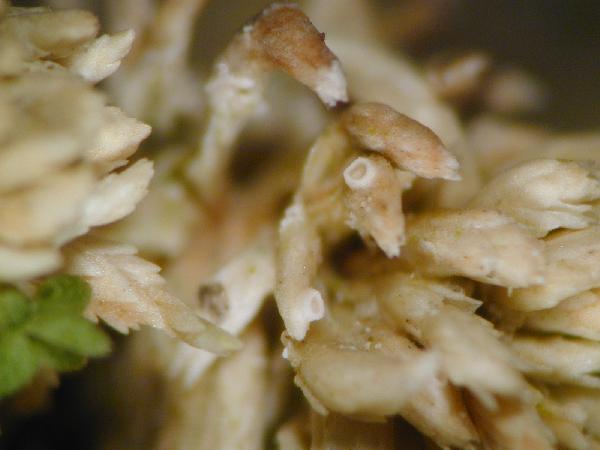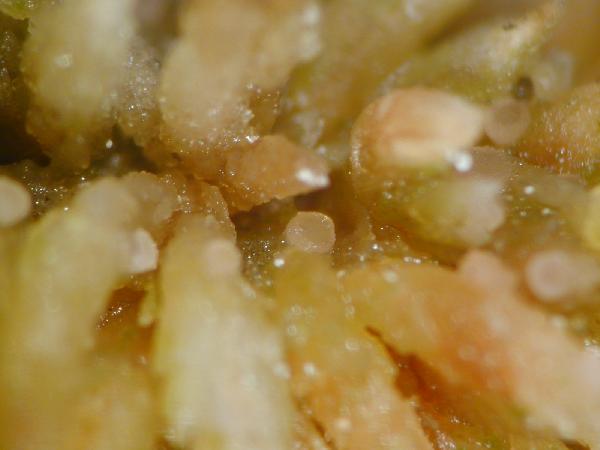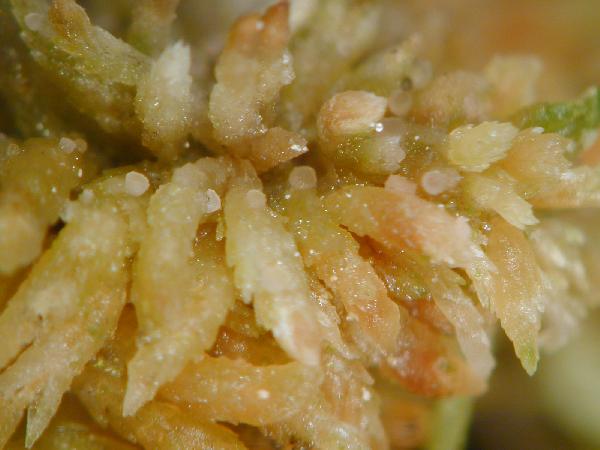Absconditella sphagnorum Vězda & Poelt
in Vězda, Preslia, 37: 238, 1965.
Synonyms:
Distribution:
Description: Thallus crustose, c. 100 µm thick, forming smooth, interrupted films on Sphagnum- and liverworts, dirty olive-green to grey-black, sometimes poorly evident. Apothecia abundant, round or irregular in outline due to mutual compression, projecting from thallus to subsessile, 0.2-0.4 mm across, 0.12-0.2 mm tall, with a deeply concave, flesh-coloured disc, and a smooth, pale yellowish white proper margin. Proper exciple colourless, up to 50 µm wide laterally , of conglutinated, parallel hyphae; epithecium indistinct, colourless; hymenium colourless, 65-85 µm high, I+ yellowish, K/I-; paraphyses dense, slender, 0.08-1 µm thick, indistinctly septate, mostly simple, the apical cells hardly swollen to clavate and up to 2 µm wide; hypothecium very thin, colourless. Asci 8-spored, long-cylindrical, thin-walled, the upper part with a distinct, K/I- apical dome penetrated by a long, narrow tube extending from the endoascus, with 1-seriately arranged spores. Ascospores 1-septate, hyaline, spindle-like, straight, 10-12 x 4-5 µm, with very thin walls and septa. Photobiont chlorococcoid, the cells 6-10 µm across. Spot tests: thallus K-, C-, KC-, P-. Chemistry: without lichen substances.
Note: on moribund Sphagnum-cushions in raised bogs, rarely on other bryophytes, usually in the uppermost part of the cushions, in sunny places; known from a few stations in the Alps (Austria, Germany) and locally abundant in late summer and autumn, especially after dry summers; probably somehow overlooked due to its ephemeral character. To be looked for in the Italian Alps.
Growth form: Crustose
Substrata: soil, terricolous mosses, and plant debris
Photobiont: green algae other than Trentepohlia
Reproductive strategy: mainly sexual
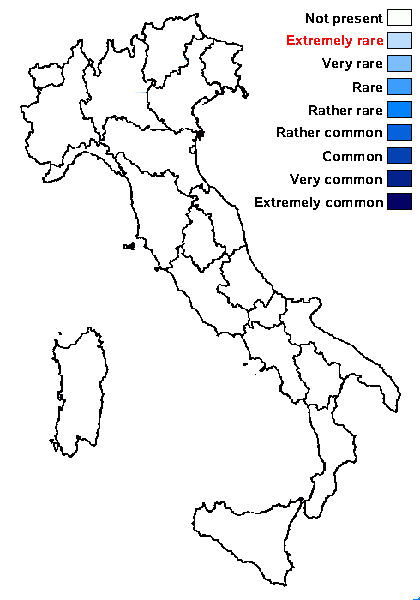
Predictive model
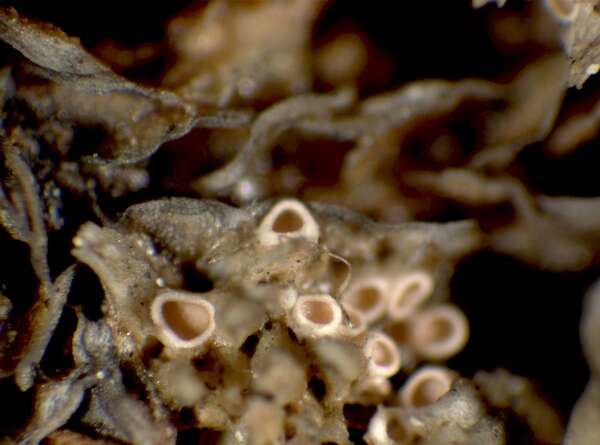

P.L. Nimis; Owner: Department of Life Sciences, University of Trieste
Herbarium: TSB (20159)
2001/12/12


Felix Schumm - CC BY-SA 4.0
[VZR151], Bohemia meridionalis, Volary montes Šumava, in turfo
"Mrtvý luh" dicto prope erný k , 740 m. Ad caespites dense contractos
(Sphagnum fuscum). Leg. Z. Palice, 18.12.1994. EX A. VEZDA:
LICHENES RARIORES EXSICCATI NR. 151.
Growth form: Crustose
Substrata: soil, terricolous mosses, and plant debris
Photobiont: green algae other than Trentepohlia
Reproductive strategy: mainly sexual

Predictive model


P.L. Nimis; Owner: Department of Life Sciences, University of Trieste
Herbarium: TSB (20159)
2001/12/12


 INDEX FUNGORUM
INDEX FUNGORUM
 GBIF
GBIF

